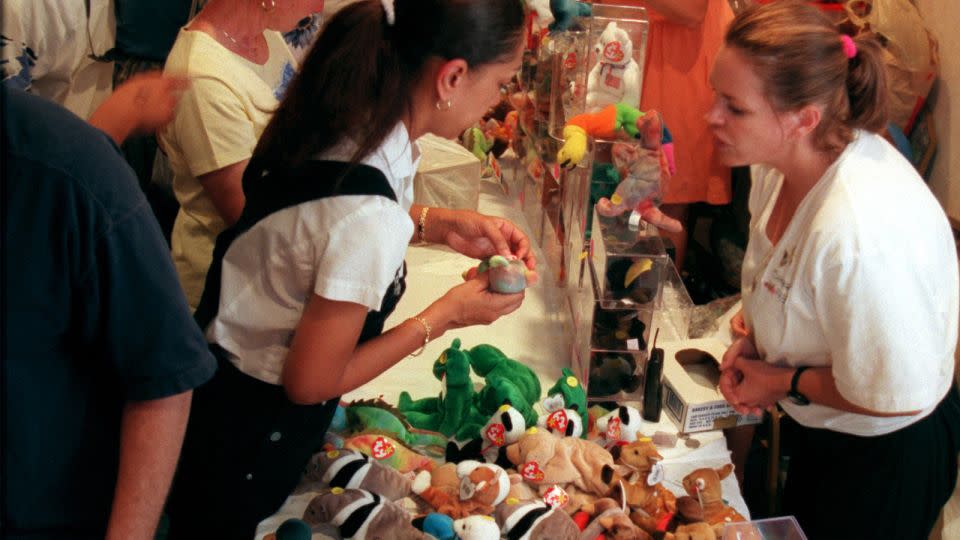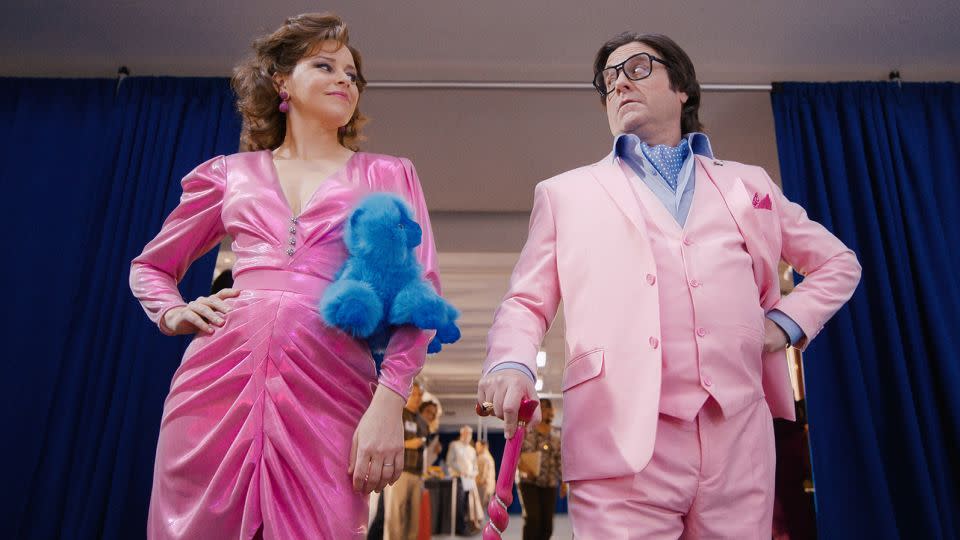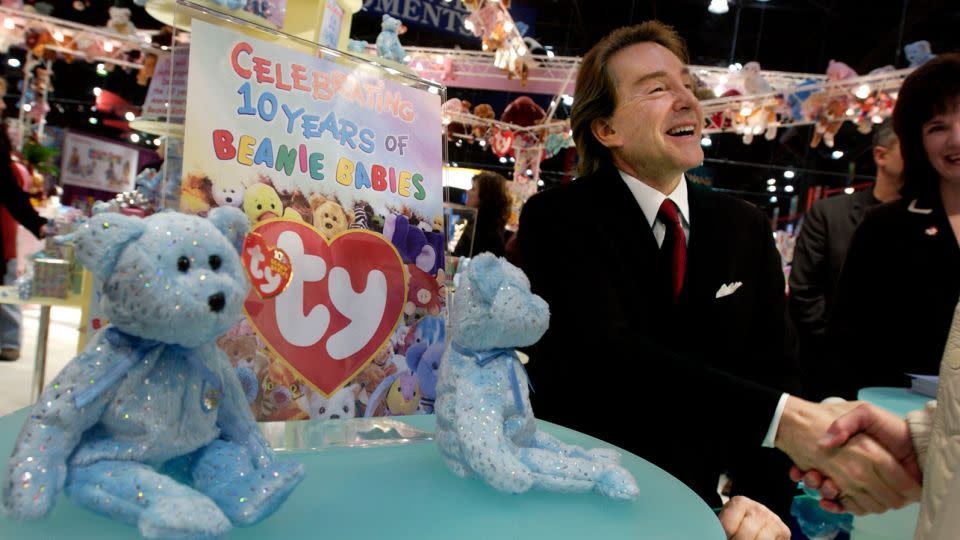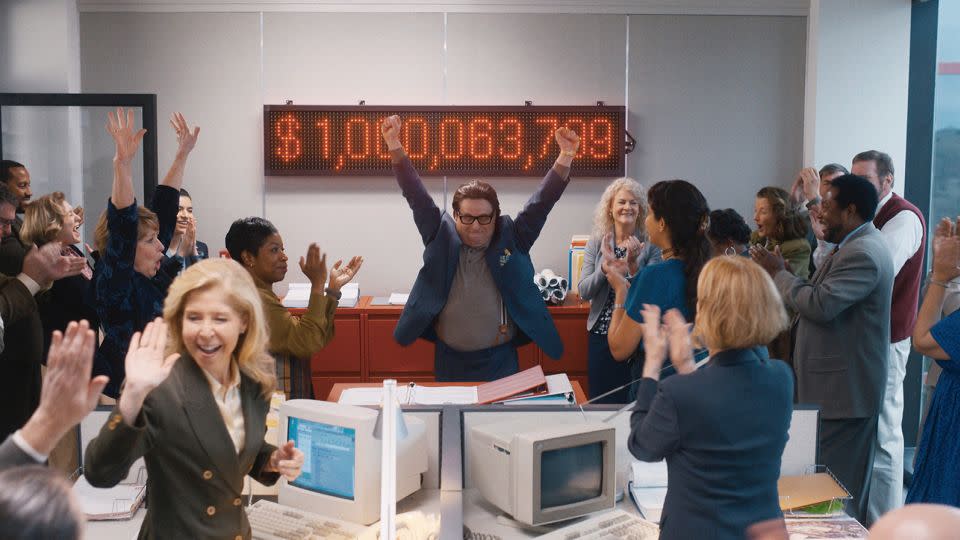Bursting the Beanie Baby bubble
- Oops!Something went wrong.Please try again later.
- Oops!Something went wrong.Please try again later.
If you were a child – or even an adult — in the nineties, it’s probable you had a collection of Beanie Babies. In fact, it’s possible you still do. Perhaps you’re hoping (like me) one of them will turn out to be worth a fortune one day.
Invented by toy impresario (and subsequent convicted tax evader) Ty Warner, an initial nine bean-filled plushies — including the first-ever Beanie Baby, Legs the Frog, as well as Chocolate the Moose and Brownie the Bear — were released at a New York toy fair in 1993, to limited success.
Warner was undeterred. His eponymous toy company released more than 20 new designs in 1994, and the poseable toys, which were sold through local gift shops rather than big chain stores, quickly became an unbridled phenomenon. A poll conducted by USA Weekend magazine in 1998 found that, at that time, 64% of Americans owned at least one Beanie Baby.
The tale of the so-called Beanie boom and the man who created it all has made it to the small screen in the form of “The Beanie Bubble” movie. Starring Zach Galifianakis, Sarah Snook and Elizabeth Banks, the film debuted on streaming service Apple TV+ last week.

Selling for around $5 each in the 1990s, the limited-edition collectible plush toys — each ticketed with a heart-shaped swing tag bearing its name, date of birth and a short personal poem — became highly sought after due to the company’s policy of discontinuing or “retiring” characters at random.
This strategy fueled a demand for rare or scarce Beanie Babies as people clamored to buy soon-to-be extinct toys, causing them to become instantly highly valuable. An underground black market began, with adults trading and bidding for the toys. Shoppers would queue overnight for rare editions or characters about to be discontinued, some even traveling internationally to get their hands on a specific Beanie. People stole them from stores. “Dealers” were enlisted to track pieces down and Beanie experts sprung up, specializing in storage and display solutions, authenticating purchases, or predicting and valuing the next big thing.
A Beanie preservation industry was spawned too, to protect their “future investments” — Perspex containers to protect bears from dust, tiny plastic sleeves to keep swing tags in immaculate condition.
Fuelling a cultural hysteria
It’s a phenomenon examined in great depth in Zac Bissonnette’s 2015 book, “The Great Beanie Baby Bubble: Mass Delusion and the Dark Side of Cute,” which inspired the movie.

“The idea for the book came to me in 2010,” the Florida-based author told CNN during a phone interview. “While at college in Massachusetts, I visited an auction house looking for furniture. There, I saw five enormous plastic containers full of Beanie Babies complete with a detailed hand-written inventory. It was clear that whoever had built this collection had done so under the belief that they would one day be of high value. As it was, the whole collection sold for about $50.”
Interest piqued, Bissonnette set about looking into the Beanie phenomenon. “As someone who was interested in financial markets, I wanted to know how this had happened,” he explained. “I started looking into the creator of Beanies, Ty Warner. He had become a billionaire off of these things having done no rounds of investment, no advertising. All of his money was made selling Beanies at a $2.50 wholesale price. It’s a pretty rare thing in business.”
Bissonnette found that the launch of eBay in 1995 had only added to the resale fever. The auction house say that in 1997, six per cent of their total volume of sales — equating to $500m — come from the sales of secondhand Beanie Babies.
Very few collectors, however, were making huge profits. While some people made money quickly flipping newly-retired” Beanie Babies — for several hundred or even a few thousand dollars — to desperate collectors, most hung on to their lions and tigers and bears (oh my) in the hopes of a future windfall.

It was a bad move. In a 2019 piece about Bissonnette’s book, the Financial Times newspaper dubbed the Beanie Baby investment movement “perhaps, in terms of its sheer level of mass insanity, the greatest market bubble of all time,” adding that the plushies were “the dotcom stock of the soccer mom world in the second half of the 1990s.”
The end of an era
Indeed as the millennium rolled around, the Beanie bubble had well and truly burst, with stock sitting unsold on the shelves and the fever surrounding the release of a new bear well and truly gone. People surmise many reasons for this, from child collectors growing up and moving on, to market saturation (collectors only have room for so many stuffed toys), but the exact reason is unclear.
“1999 was kind of the end of the dream,” Bissonnette said. “Character ‘retirement’ announcements stopped creating a huge spike in demand. But the nature of bubbles is to burst. Beanie Baby mania was always a speculative fervor that didn’t make sense.”

One person for whom Beanie mania did make perfect sense, however, was the toys’ designer and inventor Ty Warner. In 1998 alone, Ty’s sales were reportedly $1.3 billion; Beanies are still being produced today and as of July 2023, Forbes states that Warner — who invested some of his Beanie wealth into a high-end hotel portfolio which includes the Four Seasons in New York and the Four Seasons Resort in Santa Barbara — is worth $6.1 billion.
Bissonnette said he is often contacted by Beanie Collectors desperate to know the value of their toys and explained that, while there is still a market for some Beanies that meet specific criteria, most were collected en masse globally and as such, aren’t as valuable as many resale sites claim. Serious collectors, however, do reportedly pay high prices for certain Beanies.
“Peanuts the Elephant in royal blue was only produced for a short time before it was changed to a lighter blue, so that one can be valuable,” he said. “But otherwise, it’s the early Beanies, the ones created before Ty started putting a star on the swing tag that are the ones usually worth something. The value is really what everyone wants to know.”
For more CNN news and newsletters create an account at CNN.com

